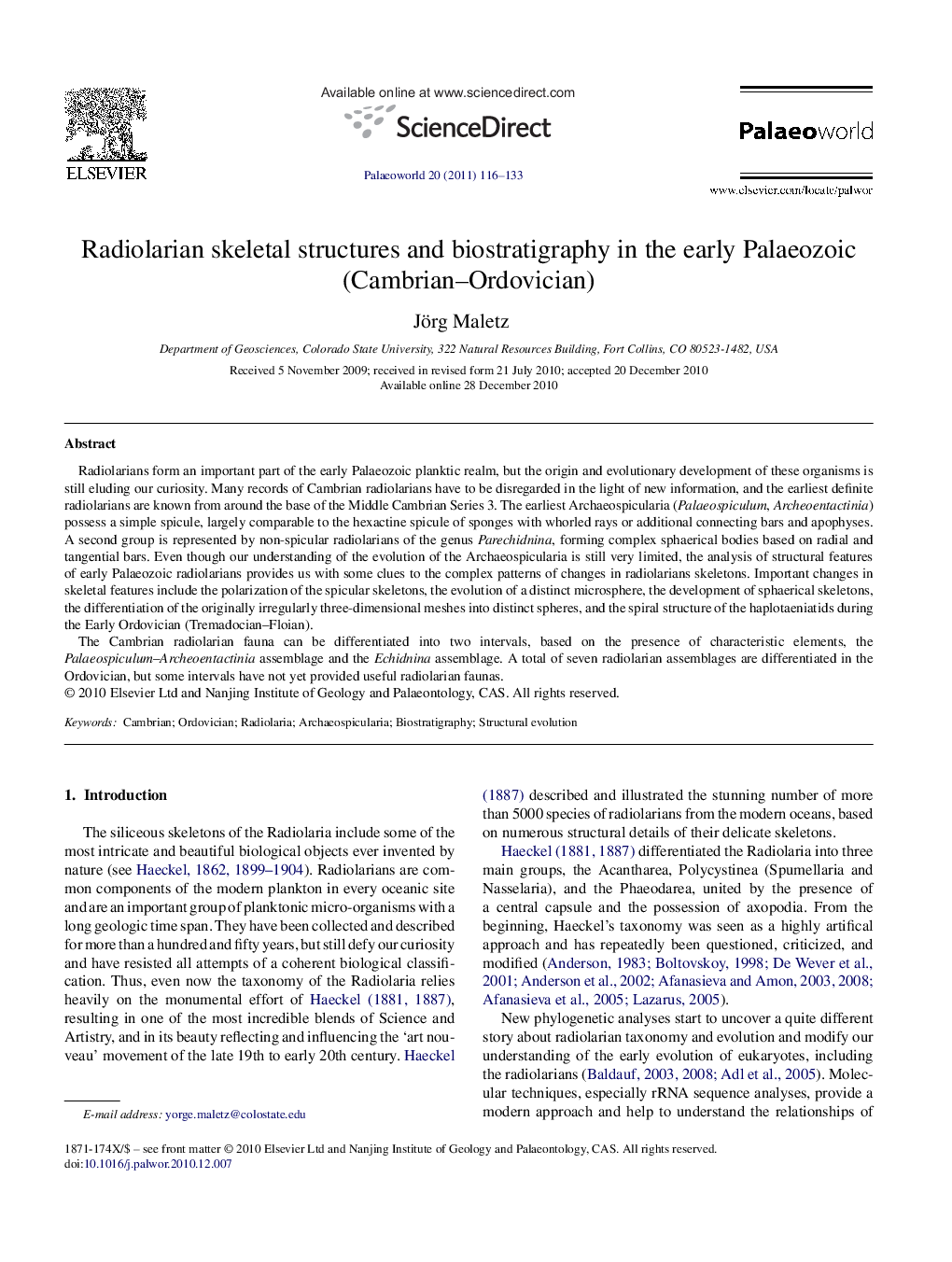| Article ID | Journal | Published Year | Pages | File Type |
|---|---|---|---|---|
| 4749881 | Palaeoworld | 2011 | 18 Pages |
Radiolarians form an important part of the early Palaeozoic planktic realm, but the origin and evolutionary development of these organisms is still eluding our curiosity. Many records of Cambrian radiolarians have to be disregarded in the light of new information, and the earliest definite radiolarians are known from around the base of the Middle Cambrian Series 3. The earliest Archaeospicularia (Palaeospiculum, Archeoentactinia) possess a simple spicule, largely comparable to the hexactine spicule of sponges with whorled rays or additional connecting bars and apophyses. A second group is represented by non-spicular radiolarians of the genus Parechidnina, forming complex sphaerical bodies based on radial and tangential bars. Even though our understanding of the evolution of the Archaeospicularia is still very limited, the analysis of structural features of early Palaeozoic radiolarians provides us with some clues to the complex patterns of changes in radiolarians skeletons. Important changes in skeletal features include the polarization of the spicular skeletons, the evolution of a distinct microsphere, the development of sphaerical skeletons, the differentiation of the originally irregularly three-dimensional meshes into distinct spheres, and the spiral structure of the haplotaeniatids during the Early Ordovician (Tremadocian–Floian).The Cambrian radiolarian fauna can be differentiated into two intervals, based on the presence of characteristic elements, the Palaeospiculum–Archeoentactinia assemblage and the Echidnina assemblage. A total of seven radiolarian assemblages are differentiated in the Ordovician, but some intervals have not yet provided useful radiolarian faunas.
